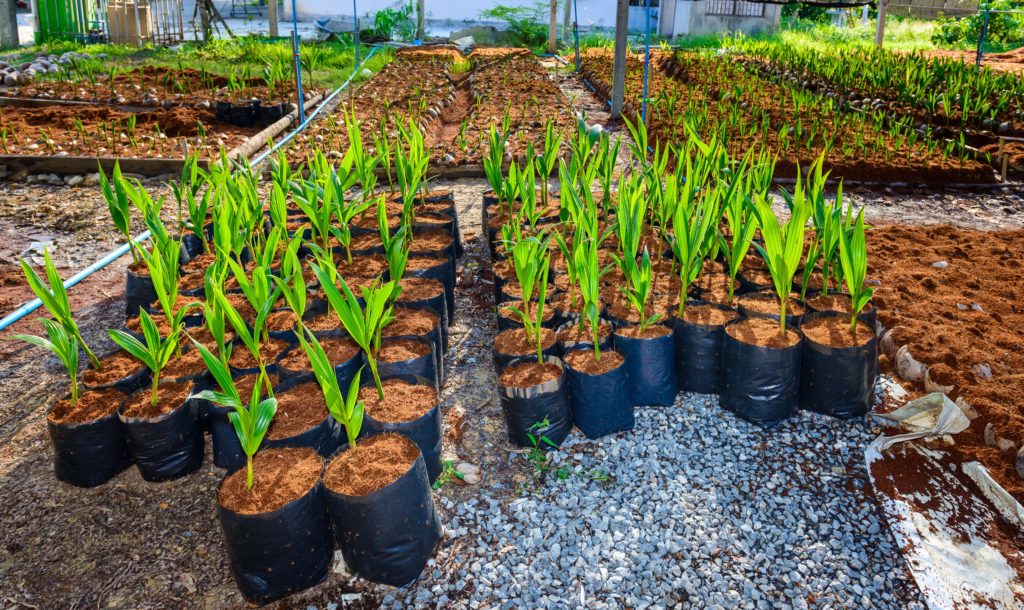
Coco coir is available for use in gardens in forms such as chips, bricks, pith, compressed discs, grow bags, hanging basket liners, and poles. It can be a valuable aid for the hobby or professional gardener and is regularly used as a substrate in microgardens — gardens grown in small areas with limited space, such as on balconies or rooftops in urban settings.
Coco Coir as a Soil Amendment
Coco coir bricks are easy to store and can absorb approximately nine times their weight in water. Once hydrated, the compact brick form becomes pith, a dust-like material that is easy to spread over large-sized gardens.
Place the coco coir brick inside a water-filled container for at least an hour to expand it into its loose form. Then mix the pith into the soil to prepare it for planting. In nonabsorbent sandy soil, it will help retain moisture. In clay-based soil that holds onto moisture, it aids drainage. You can also spread coir dust over the top of the soil to hold in moisture and discourage weed growth.
Coir discs often come in place of soil inside bulb or bonsai kits. They are just the right size to be used as seed starters in germination trays or individual pots and are made of compressed pith, which makes growing seedlings clean and efficient. Their small size makes them easy to store, and coco coir’s ability to hold water while providing aeration allows for efficient plant hydration.
Just add water to the coir disc to expand it into its full size, and then gently push seeds down into the disc before placing it into the plant pot or tray. Once the seed has germinated into a healthy seedling, you can plant the entire disc in your garden.
Made from coconut shells, coco coir chips can be used to keep hydroponic gardens hydrated. You can also spread them over flower beds in place of bark to keep gardens moist while still allowing air flow. Although you can use coir chips alone, you can also combine them with coir dust in gardens that need a little extra aeration.
Coco Coir as a Gardening Accessory
Coco coir grow bags are useful in mass-producing gardens where the goal is a high crop yield. The bags contain coco coir that expands with the addition of water to fill the bag. You can then cut holes into the bag in which to place the plant roots. The use of such bags makes these gardens easily transportable.
Coco coir hanging basket liners hold onto moisture while preventing rot and fungus from forming, as can often happen in hanging pots with no drainage holes. Line the hanging basket with the coir liner, and then fill it with dirt and plants.
Coco coir poles are useful for vines and shrubs that need a structure to support them. The coir wrapped around the pole holds moisture, aiding in healthy growth for the plant.
In any form, coco coir facilitates garden hydration and drainage issues.

Leave a Reply
You must be logged in to post a comment.